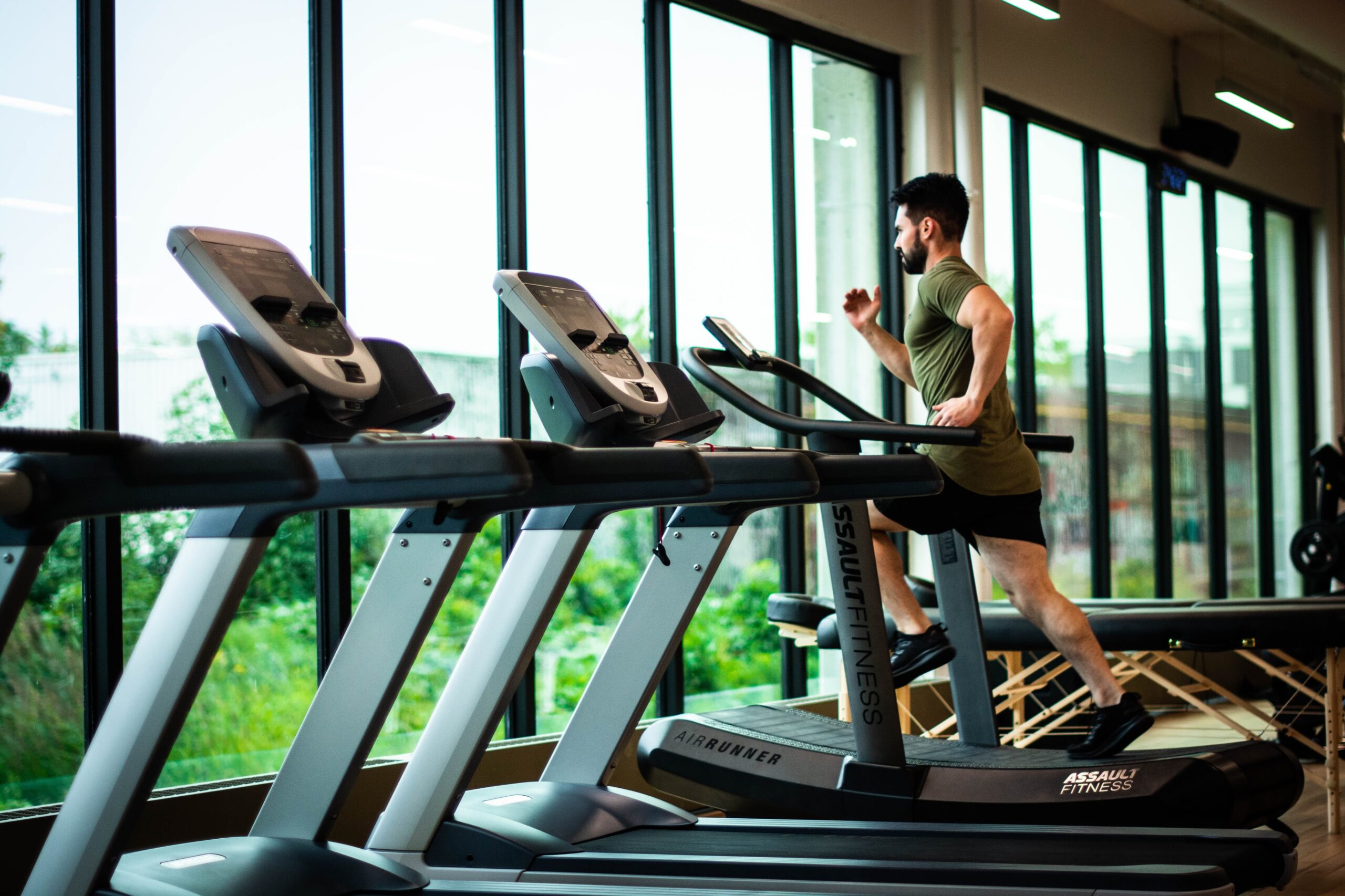
Running is a popular form of exercise for athletes and fitness enthusiasts, it offers numerous benefits, such as improving cardiovascular health, reducing stress, and boosting mood. However, running with poor form can lead to injuries, decreased performance, and fatigue. In this article, we will do a comprehensive investigation to help you improve your running form and increase your endurance.
Running endurance can be increased with the correct body posture, increasing cadence, landing lightly on your mid-foot, rhythmic breathing, and improving your stride length.
Key Takeaways
- Running with proper form is essential for improving endurance and performance while reducing the risk of injuries.
- Key aspects of running form include maintaining a tall posture, landing lightly on the mid-foot, increasing cadence, relaxing the arms, engaging the core, and breathing deeply.
- Common running form mistakes include improper foot strike, overstriding, poor posture, incorrect arm swing, shallow breathing, weak core, misaligned hips, improper footwear, and running on unsuitable terrain.
- Improving running form requires gradual changes and consistency, and it can take weeks or months to see significant improvements.
- Additional techniques to enhance running form and endurance include working on flexibility, incorporating hill running and interval training, using a metronome, wearing proper running shoes, filming oneself to analyze form, and cross-training.
- Proper warm-up, cool-down, and stretching are essential for injury prevention and maintaining good running form.
- Consultation with a running coach or expert can provide valuable feedback and guidance in improving running form.
- Remember to consult with a healthcare professional for personalized advice before making any significant changes to your running routine.
How to Improve Your Running Form for Better Endurance
Running form refers to the way you run, including your posture, foot strike, arm swing, and cadence. Improving your running form can help you run faster, longer, and with less effort. Here are some tips to help you improve your running form for better endurance:
1. Stand Tall
Maintain a tall posture with your head up, shoulders relaxed, and chest open. Avoid slouching or leaning forward, as it can lead to decreased lung capacity and increased strain on your back.
2. Land Lightly
Try to land on the middle of your foot or forefoot, rather than your heel. Landing too hard on your heel can lead to joint pain and injuries, such as shin splints or plantar fasciitis.
3. Increase Your Cadence
Cadence refers to the number of steps you take per minute. Increasing your cadence can help you run faster and with less effort, as it allows you to take shorter, quicker steps. Aim for a cadence of 170-180 steps per minute.
4. Relax Your Arms
Keep your arms relaxed and bent at a 90-degree angle, with your hands loosely clenched. Avoid crossing your arms over your body, as it can lead to decreased efficiency and increased fatigue.
5. Engage Your Core
Engage your core muscles, including your abs and lower back, to maintain good posture and stability while running. This can help you run more efficiently and with less strain on your body.
6. Breathe Deeply
Practice deep breathing to improve your lung capacity and endurance. Inhale deeply through your nose, and exhale fully through your mouth. Focus on breathing from your diaphragm, rather than your chest.
Also Read: Ultimate Guide to Building Strong Legs: Top 10 Leg Workouts for a Sculpted Lower Body
Common Running Form Mistakes
Before we dive into the tips to improve your running form, let’s take a look at some common mistakes that runners make. By avoiding these mistakes and implementing the following tips, you can significantly improve your running form.
1. Foot Strike
Your foot strike refers to the part of your foot that makes contact with the ground when running. There are three types of foot strikes: heel strike, midfoot strike, and forefoot strike.
- Heel Strike: This type of foot strike occurs when your heel hits the ground first. This can cause a jarring impact on your joints and slow you down.
- Midfoot Strike: This type of foot strike occurs when the middle of your foot hits the ground first. This is the most efficient and natural foot strike.
- Forefoot Strike: This type of foot strike occurs when the ball of your foot hits the ground first. This can put more strain on your calves and Achilles tendon.
To improve your foot strike, focus on landing on the middle of your foot and rolling forward onto your toes. This will help reduce the impact on your joints and improve your overall efficiency.
2. Stride Length
Your stride length refers to the distance between each step you take when running. Many runners make the mistake of overstriding, which means they take too long of a step and land on their heels. This can cause impact and slow you down.
To improve your stride length, focus on taking shorter, quicker steps. Aim to take around 180 steps per minute. This will help improve your overall efficiency and reduce the impact on your joints.
3. Cadence
Your cadence refers to the number of steps you take per minute when running. As mentioned above, aiming for around 180 steps per minute can help improve your stride length and overall efficiency.
To improve your cadence, try running with a metronome or using a running app that tracks your cadence. This will help you maintain a consistent rhythm and improve your overall efficiency.
4. Posture
Your posture is crucial when it comes to running form. Many runners make the mistake of slouching, which can cause strain on your back and slow you down.
To improve your posture, focus on keeping your head up, shoulders back, and core engaged. Imagine a string pulling you up from the top of your head, keeping you tall and upright.
5. Arm Swing
Your arm swing plays an essential role in your running form. Many runners make the mistake of crossing their arms in front of their body, which can cause tension in the shoulders and reduce your overall efficiency.
To improve your arm swing, keep your arms at a 90-degree angle and swing them back and forth naturally. Focus on keeping your shoulders relaxed and avoid crossing your arms in front of your body.
6. Breathing Technique
Proper breathing techniques can help you maintain your endurance and prevent fatigue. Many runners make the mistake of breathing shallowly or holding their breath, which can cause cramping and fatigue.
To improve your breathing technique, focus on taking deep breaths from your diaphragm. Inhale deeply through your nose and exhale fully through your mouth. Aim to breathe in a rhythm that matches your running cadence.
7. Core Strength
Your core muscles play an essential role in your running form. A strong core can help you maintain proper posture and reduce the risk of injury.
To improve your core strength, incorporate exercises such as planks, crunches, and bridges into your workout routine. Aim to train your core muscles at least twice a week.
8. Hip Alignment
Proper hip alignment is essential for maintaining proper running form. Many runners make the mistake of running with their hips tilted forward or backward, which can cause strain on the lower back and reduce your overall efficiency.
To improve your hip alignment, focus on keeping your hips level and aligned with your shoulders. Imagine a straight line running from your head down to your feet, and keep your hips in line with that line.
9. Footwear
The right footwear is essential for maintaining proper running form and preventing injury. Many runners make the mistake of wearing shoes that are too small or too big, which can cause blisters, and pain, and reduce your overall efficiency.
To improve your footwear, choose shoes that are the right size and provide adequate support for your foot type. Visit a specialty running store to get fitted for the right shoes for your needs.
10. Terrain
The terrain you run on can also affect your running form and endurance. Many runners make the mistake of running on hard or uneven surfaces, which can cause impact and reduce your overall efficiency.
To improve your terrain, choose surfaces that are flat, even, and provide some cushioning. If you are training for a race that will take place on a specific terrain, incorporate that terrain into your training.
11. Warm-up and Cool-down
Proper warm-up and cool-down are essential for preventing injury and maintaining proper running form. Many runners make the mistake of skipping their warm-up and cool-down, which can cause strain and reduce your overall efficiency.
To improve your warm-up and cool-down, incorporate dynamic stretches such as leg swings and lunges into your warm-up, and static stretches such as hamstring stretches and quad stretches into your cool-down.
12. Cross-Training
Cross-training can help improve your overall endurance and prevent injury. Many runners make the mistake of only running, which can lead to overuse injuries and reduce overall efficiency.
To improve your cross-training, incorporate activities such as swimming, cycling, and strength training into your workout routine. Aim to cross-train at least once or twice a week.
13. Visualization
Visualization can help improve your mental focus and endurance when running. Many runners make the mistake of getting distracted or losing focus, which can lead to fatigue and reduce your overall efficiency.
To improve your visualization, imagine yourself running effortlessly and smoothly. Focus on the sensation of your feet hitting the ground, the rhythm of your breath, and the scenery around you.
Also Read: Unleash the Fire Within: The Top-5 Fat Burning Cardio Workouts
Other Techniques to Improve Your Running Form for Better Endurance
In addition to the tips above, there are other techniques you can try to improve your running form and increase your endurance. Here are some ideas to consider:
1. Work on Your Flexibility
Stretching and foam rolling can help improve your flexibility and range of motion, which can lead to better running form and decreased risk of injury. Focus on stretching your hamstrings, calves, hip flexors, and IT band.
2. Try Hill Running
Hill running can help improve your strength, power, and endurance, as it requires more effort and engages more muscle groups than flat running. Start with small hills and gradually increase the incline and distance.
3. Incorporate Interval Training
Intermittent exercising incorporates alternating phases of sprinting at high intensity with breaks or slower running at low intensity. This can help improve your speed, endurance, and overall fitness.
4. Use a Metronome
A metronome is a tool that helps you keep a steady rhythm or cadence while running. Set the metronome to your desired cadence, and try to match your foot strikes to the beat.
5. Get Proper Shoes
Investing in a good pair of running shoes can help improve your running form and decrease your risk of injury. Look for shoes that provide adequate support, cushioning, and stability, and replace them every 300-500 miles.
6. Film Yourself Running
One of the best ways to improve your running form is to watch yourself in action. Use your phone or camera to film yourself running from different angles, including the front, side, and back. Look for areas where you can improve, such as your posture, foot strike, or arm swing. You can also ask a running coach or experienced runner to analyze your form and provide feedback.
Final Thoughts
Improving one’s running form is of utmost importance in enhancing endurance and achieving fitness targets. Proper posture, gentle foot landing, quick cadence, relaxed arms, activated core, and profound breathing are pivotal in enriching the running experience and covering greater distances with minimal exertion. Furthermore, incorporating other techniques such as stretching, hill running, interval training, and utilizing a metronome can significantly augment form and endurance. It is worth noting that refining running form demands persistent commitment and determination. Nevertheless, with unwavering dedication and a positive outlook, one can progress into a more proficient runner and reap the myriad benefits associated with running.
Also Read: The Holy Grail of Fitness: Discover Its Mind-Blowing Benefits of HIIT Workouts
FAQs
- Q: How long does it take to improve running form?
- A: Improving your running form is a gradual process that can take weeks or months, depending on your starting point and goals. It’s important to be patient, consistent, and persistent in your efforts to improve.
- Q: Can poor running form cause injuries?
- A: Yes, running with poor form can increase your risk of injuries, such as shin splints, IT band syndrome, or plantar fasciitis. It can also lead to decreased performance and efficiency.
- Q: Should I try to change my running form?
- A: If your current running form is causing pain or discomfort, or if you want to improve your performance or efficiency, it may be worth trying to change your running form. However, it’s important to make changes gradually and with the help of a running coach or expert.
- Q: Is it better to land on my forefoot or midfoot?
- A: Both the forefoot and midfoot striking can be effective for improving running form and reducing the risk of injuries. It’s important to find a foot strike that feels comfortable and natural for you.
- Q: Should I get fitted for running shoes?
- A: Yes, it’s important to get fitted for running shoes to ensure that you have the right size and support for your foot type. Visit a specialty running store to get fitted for the right shoes for your needs.
- Q: How can I breathe better while running?
- A: Practicing deep breathing and focusing on breathing from your diaphragm can help improve your lung capacity and endurance while running. It’s also important to breathe steadily and rhythmically, rather than holding your breath or panting.
- Q: Can stretching help improve running form?
- A: Stretching can help improve flexibility, which can improve your overall running form. However, it’s important to incorporate dynamic stretching into your warm-up and static stretching into your cool-down to prevent injury.
Hashtags: #RunningForm #EnduranceTraining #RunningTips #FitnessGoals #HealthyLiving #RunningCommunity #InjuryPrevention #RunningTechniques #RunningStride #RunningCoach #FitnessMotivation #CardioWorkout #RunningAdvice #RunningPerformance #RunSmart
Note: The information provided in this article is for educational purposes only and should not be taken as medical advice. For personalized health recommendations, it is always advisable to consult with a healthcare professional before incorporating any changes to your daily health routine.







No comment yet, add your voice below!